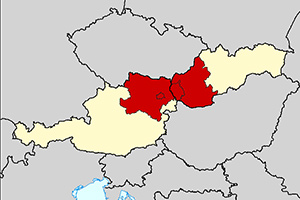EU-funded project coordinates cross-border educational activities to help Slovakian and Austrian schoolchildren learn the language and customs of their neightbours.
Better start early! Intercultural education for kids, pupils and teachers
- 26 January 2018
We set out to increase the cultural understanding of students, parents and teachers and, thanks to the open-mindedness of participating students who served as cultural ambassadors, the project’s activities and objectives were adopted at the community level.
In 2004, the region of Lower Austria launched an initiative to promote the languages of its neighbouring countries in the kindergartens and schools located along the border, using a methodic-didactic concept. As part of this initiative, there were numerous excursions to various kindergartens located in Slovakia, establishing contacts and laying the foundation for greater cooperation. The Bi-lingual kindergarten in Wolfsthal project built on this foundation.
The project set out to coordinate cross-border educational activities aimed at helping Slovakian and Austrian schoolchildren learn the language and customs of their neighbours. Furthermore, it also enhanced the cultural understanding of parents and teachers. As a result, certain barriers were removed and a regional, intercultural competence was established.
Cultural ambassadors
However, bringing foreign cultures and peoples together is never easy, even when they coexist as neighbours. As the ultimate goal of the project was to transform the unfamiliar into the familiar, the project turned to schoolchildren to serve as cultural ambassadors.
Unhibited by the prejudices and fears of many adults, the project aimed to overcome cultural barriers by leaning on the open-mindedness of participating students. The students were asked to share what they learned with parents, siblings and grand-parents – many of whom soon became activley involved in the activies themselves. From the project beginnings in kindergarten, the programme was expanded to grammer schools and, later, to local decision-makers – who adopted some of the activities at the community level.
An overwhelming success
As a result of the project, 25 language teachers were hired specifically to coordinate cross-border learning activities such as playing games, singing in both languages, gymnastics, cultural discovery classes and language lessons. In addition, new facilities and teaching materials were developed for the bilingual activities.
The numbers indicate that the project was an overwhelming success: 78 kindergartens and grammar schools participated, creating 47 cross-border partnerships between schools. In total, nearly 5000 kindergarten pupils and 3000 grammar school students participated in the project. As an added bonus, 55 new jobs were created.
Perhaps the project’s greatest achievement is the enthusiasm for cultural learning that has been embraced, not only by the schoolchildren, but by project partners, parents and teachers, too. Even today, well after the project ended, many of the schools are still using the methods and activities first developed by the Bi-lingual Kindergarten in Wolfsthal project.
Total investment and EU funding
Total investment for the project “Bi-lingual Kindergarten in Wolfsthal” is EUR 939 748, with the EU’s European Regional Development Fund contributing EUR 798 780 through the “European Territorial Cooperation Austria – Slovak Republic” Operational Programme for the 2007-2013 programming period.

